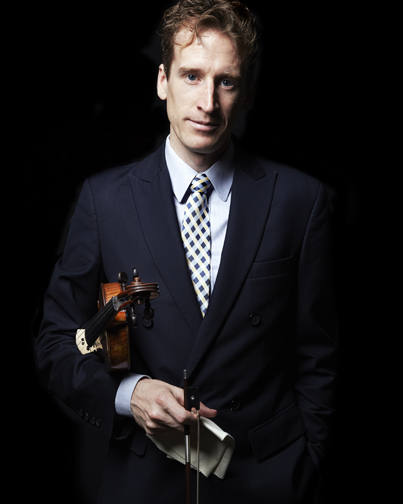Age: 37
Job Title: Associate Professor of Music, University of Alberta
Why He’s Top 40: He’s bringing string music to Edmonton, free of charge, while equipping music students with the essential business skills necessary to manage their careers.
Key To Success: “It comes down to a balancing of what you want to do and what you can do – physically, intellectually – with the resources you have.”
Parents take note: Guillaume Tardif is proof that reverse psychology actually works. The Quebec City native began playing violin around age five, but, by 13, every lesson had him in tears. Then, Tardif’s mother, proficient in piano, told him she wouldn’t help him anymore. His pride overcame his growing distaste. “I had to prove to her I could do it,” he recalls.
Tardif did it, all right. Today, strings are his life. The graduate of the University of Rochester’s Eastman School of Music has been, at his core, a performer since becoming a violin soloist at 18. Now, his mandate is to bring the music he loves to audiences that might not normally hear it through Edmonton’s Enterprise Quartet. The string ensemble he co-founded in 2008 with members of the Edmonton Symphony Orchestra presents free public concerts (17 so far this year) at places like City Hall.
Tardif also shares his passion for music with students as an associate professor at the University of Alberta, teaching violin and chamber music, string pedagogy and string literature. But he knows that students need more than talent and passion to be able to survive as musicians. They need a solid grasp of business. He has a Web app in the works that will take students through the concert management process step-by-step, and his seminar, Culture and Creativity from the Music and Business Perspectives, draws parallels between musical basics and business principles. The course was recognized in a recent Globe and Mail business school roundup as one that meets an increasing MBA student demand for arts sector-related business courses.
This summer, Tardif presented the lecture as part of a faculty exchange in Austria. Soon after, he attended a conference in Italy, where senior colleagues encouraged many to participate in the presentation aspects of conferences, rather than confining themselves strictly to performance. Upon his return from Italy, he began formulating proposals to present at conferences in Switzerland and the United States. “Conference presentations can point to original creativity, presenting more authentic, vivid music.”
